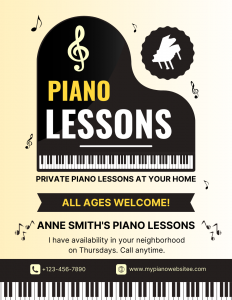 Being a music teacher involves more than just teaching notes, scales, and melodies. A great music teacher strives to instill a deep and enduring passion for music, which requires motivation. Students won’t practice if they are not motivated, and that’s an early sign that they will eventually quit music lessons or, at a minimum, seek a new music teacher. It is your responsibility to ignite and sustain motivation in young musicians. This article explains how music teachers can motivate and sustain their students’ enthusiasm for music lessons.
Being a music teacher involves more than just teaching notes, scales, and melodies. A great music teacher strives to instill a deep and enduring passion for music, which requires motivation. Students won’t practice if they are not motivated, and that’s an early sign that they will eventually quit music lessons or, at a minimum, seek a new music teacher. It is your responsibility to ignite and sustain motivation in young musicians. This article explains how music teachers can motivate and sustain their students’ enthusiasm for music lessons.
4 Key Motivational Strategies for Music Teachers
The four key strategies below aren’t the only strategies a music teacher can use to motivate their students to practice music, but these are some of the top ones you should consider employing. Below each of the four strategies are several “sub-strategies” that apply to the key strategy. For each sub-strategy, we listed an example and a way you can make it a habit. We will offer actionable tips to help you empower your students and develop a love for music. Whenever it makes sense, we will showcase some of the motivational tools provided by MusicTeacherNotes music lesson software to help students stay motivated. With that, let’s begin!
The Power of Positive Reinforcement
Positive reinforcement is a powerful motivational strategy for music teachers to keep students motivated and engaged. When students feel their efforts are recognized and valued, they’re more likely to stay committed to their practice and progress. Here are ways to use positive reinforcement and make it a habit in your teaching:
1. Verbal Praise
- Example: After a student successfully plays a challenging piece, say, “That was fantastic! You’ve really improved your technique since last week.”
- Habit Formation: Make it a point to always end each lesson with at least one specific compliment about something the student did well. This reinforces the idea that progress is being made, even if it’s incremental. If you have constructive criticism, sandwich it between praise statements. “Nice job! You nailed almost every note. In this one measure you missed a couple, which we can work on. But you’re really improving, your practice shows!” Notice that the slightly negative feedback about missed notes is surrounded by uplifting statements.
2. Reward Systems
- Example: Create a sticker chart where students earn a sticker for each successful practice session or lesson. After a certain number of stickers, they can choose a small reward like a piece of sheet music or a fun music-themed accessory.
- Habit Formation: Integrate the reward system into your routine by having the chart visible during lessons. Start every lesson by checking the chart and discussing the progress made.
3. Acknowledging Effort, Not Just Results
- Example: If a student struggles with a piece but shows improvement over time, acknowledge their hard work: “I can see how much effort you’re putting into this. Keep going, and it will get even easier!”
- Habit Formation: Make it a habit to comment on the effort as much as the outcome. For every critique you give, balance it with a recognition of the effort the student is putting in.
4. Public Recognition
- Example: During a recital, take a moment to highlight the achievements of each student. Mention something they’ve improved on or a challenge they’ve overcome.
- Habit Formation: Include a ‘student of the month’ or ‘most improved’ segment in your recitals or group classes, ensuring every student gets recognized over time.
5. Personalized Feedback
- Example: After a lesson, send a quick email or note to the student (or their parents) highlighting something specific they did well, such as mastering a tricky rhythm or showing great musical expression.
- Habit Formation: Set aside a few minutes after each lesson to jot down something positive to share later. This small effort can have a big impact on the student’s motivation. MusicTeacherNotes offers a messaging feature where you can send messages to student or parents. The messages show in their MusicTeacherNotes family account and in their email if they have an email address.
6. Incorporating Fun Milestones
- Example: Set fun, achievable goals like “Play your first full song by heart” or “Master the C Major scale.” Celebrate these milestones with a small celebration or recognition.
- Habit Formation: Regularly set new milestones and celebrate them during lessons. This keeps the lessons exciting and gives students something to look forward to.
7. Positive Body Language
- Example: Use smiles, nods, and enthusiastic gestures when a student does something well. Sometimes, a simple thumbs-up can be just as effective as verbal praise.
- Habit Formation: Be conscious of your body language during lessons. Make it a point to use positive gestures to reinforce your words.
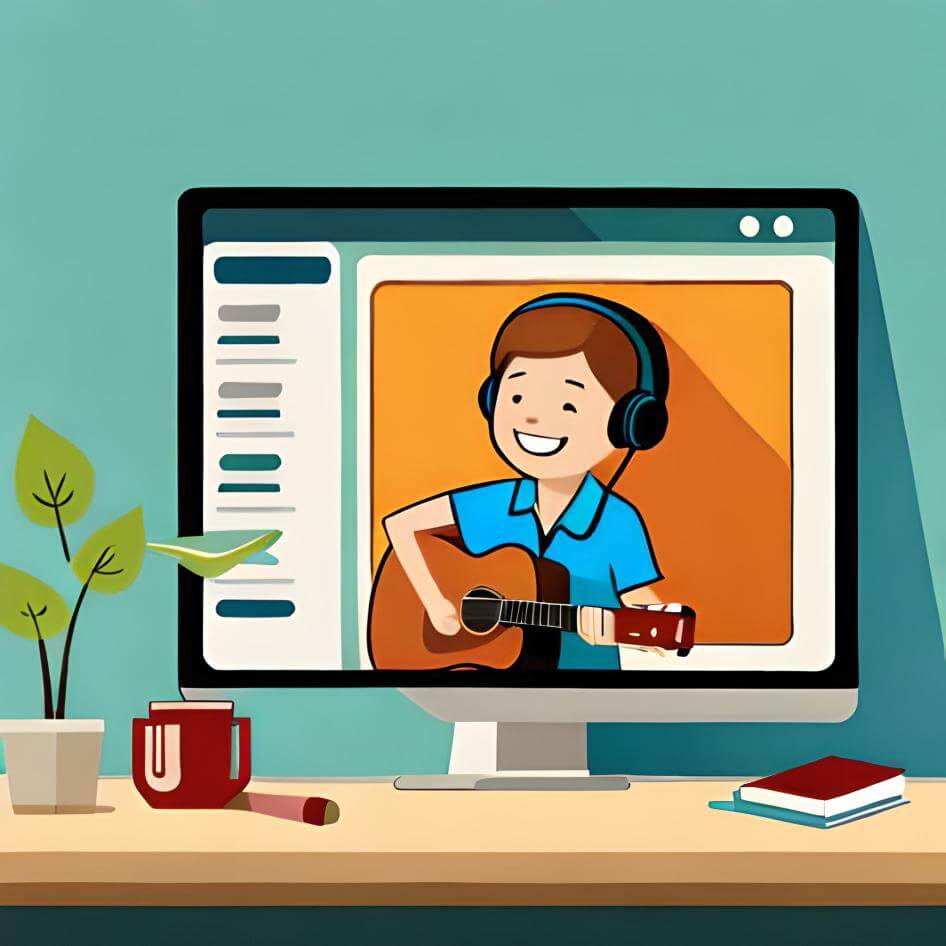
Do you want to get more students and grow your music teaching business?
MusicTeacherNotes is music teacher software that helps music teachers get more students and manage all aspects of their music teaching business! Every teacher who registers for a free account gets a Music Teacher Directory listing, even if they never upgrade. There is no risk in joining.
Encourage a Growth Mindset
Stanford psychologist Carol Dweck described a growth mindset as “a belief that a one’s capacities and talents can be improved over time.” Instilling a growth mindset in your music students is crucial for their long-term success. When students believe that their abilities can be developed through dedication and hard work, they are more likely to take on challenges and persist in the face of setbacks. Here’s how you can encourage a growth mindset and make it a core part of your teaching practice:
1. Normalize Mistakes
- Example: When a student makes a mistake while playing a piece, respond by saying, “Mistakes are great! They show us what we need to focus on. Let’s work on that part together.”
- Habit Formation: Regularly address mistakes as a natural and expected part of learning. After a mistake, immediately ask the student what they learned from it and how they can improve, reinforcing that errors are simply stepping stones to mastery.
2. Praise Effort, Not Just Talent
- Example: Instead of saying, “You’re so talented,” say, “I can see how much effort you put into practicing this week. That’s why you’re improving so quickly!”
- Habit Formation: Make a conscious effort to compliment the hard work and practice students put in, rather than just the outcome. This helps them understand that progress comes from effort, not just innate ability.
3. Set Process-Oriented Goals
- Example: Instead of setting a goal like “Play this piece perfectly,” set goals such as “Practice this section slowly three times every day” or “Focus on the dynamics in this passage.”
- Habit Formation: Regularly set small, achievable process goals during lessons. Review these goals at the start of each lesson to emphasize that consistent effort and attention to detail are what lead to improvement.
4. Share Stories of Growth
- Example: Share stories of famous musicians who overcame challenges or had to work hard to achieve their skills, emphasizing that even the most successful artists faced obstacles.
- Habit Formation: Incorporate these stories into your teaching by regularly discussing them during lessons, especially when a student is feeling discouraged. This helps them see that struggle is a common part of the journey to success.
5. Encourage Reflection
- Example: After a performance or practice session, ask students to reflect on what went well and what they could improve. Questions like “What part was most challenging?” or “How did you feel about your progress this week?” help them think critically about their learning process.
- Habit Formation: Make reflection a regular part of your lessons by setting aside time at the end of each session for students to evaluate their own performance and set intentions for their next practice.
6. Use Growth-Oriented Language
- Example: Instead of saying, “You’re not getting this,” say, “You haven’t mastered this yet, but with more practice, you will.” This subtle shift in language reinforces the idea that skills are developed over time.
- Habit Formation: Train yourself to use “yet” and other growth-oriented phrases regularly. This language helps students internalize the belief that their abilities are not fixed and that improvement is always possible with effort.
7. Model a Growth Mindset
- Example: Share your own experiences with learning something new or overcoming a challenge. For example, you might say, “When I was learning this piece, I struggled with this part too. It took a lot of slow practice before I got it.”
- Habit Formation: Be open about your own learning process, showing students that even teachers have to work hard to improve. This creates a classroom culture where growth is valued over perfection.
8. Create a Safe Learning Environment
- Example: Foster a classroom atmosphere where students feel comfortable making mistakes and asking for help. Celebrate the effort and encourage students to support each other’s growth.
- Habit Formation: Regularly check in with students about how they feel in the learning environment. Make it a priority to address any feelings of fear or discouragement by reinforcing the value of trying and learning from mistakes.
Allow Students to Choose Repertoire
Empowering music students to choose their repertoire is a highly effective way to boost their motivation and engagement. When students have a say in what they play, they are more likely to feel connected to the music, which can lead to increased practice and a deeper commitment to their learning. Here’s how you can incorporate student choice into your teaching and make it a regular part of your approach:
1. Offer a Balanced Selection
- Example: Provide students with a list of pieces from different genres, such as classical, jazz, pop, or folk. Let them choose from the list while ensuring that the selected pieces are appropriate for their skill level.
- Habit Formation: At the start of each term or lesson cycle, present a curated list of options for students to pick from. This gives them a sense of control while still guiding them toward pieces that will help them grow.
2. Encourage Exploration
- Example: Encourage students to listen to various types of music and bring in pieces they are interested in learning. You could say, “Take some time this week to explore different genres, and let me know if there’s a song or piece you’d love to learn.”
- Habit Formation: Make it a regular part of your lessons to ask students about new music they’ve discovered. Set aside time periodically to discuss their findings and see how those pieces could fit into their repertoire.
3. Create Themed Recitals or Projects
- Example: Allow students to choose a theme for a recital, such as “Music from the Movies” or “Classical Favorites.” Within the theme, let them select the pieces they want to perform.
- Habit Formation: Introduce themed recitals or projects as a regular part of your teaching calendar. By giving students a thematic framework, you can guide their choices while still allowing them to pick pieces that resonate with them.
4. Collaborative Decision-Making
- Example: Work with the student to choose a piece together. Discuss their interests and goals, then suggest a few options that align with their preferences and skill level. You might say, “I know you enjoy jazz—how about we try this piece? Or is there another one you’re curious about?”
- Habit Formation: Make collaborative repertoire selection a standard part of your lesson planning. By involving the student in the decision-making process, you foster a partnership where they feel their opinions are valued.
5. Incorporate Popular Music
- Example: If a student is particularly interested in a current pop song, offer to arrange it for their instrument and skill level. This can be a fun way to keep them engaged with their practice.
- Habit Formation: Regularly ask students about their favorite songs on the radio or from their playlists. Incorporate these into your lessons whenever possible, balancing them with more traditional repertoire to ensure a well-rounded education. If they don’t seem to have a favorite, give them an assignment to listen to some things you might thing they’ll like. Let them hear a few songs from different artists so they can find one they like, then tell them their homework is to learn the words to at least 5 songs from that artist!
6. Empower Self-Expression
- Example: Encourage students to express why they are drawn to a particular piece. Ask them to share what they like about the music and how it makes them feel. This deepens their connection to the piece and motivates them to practice.
- Habit Formation: Include discussions about musical preferences and emotional responses as a regular part of your lessons. This helps students articulate their tastes and strengthens their investment in the pieces they choose.
7. Rotate Repertoire Choices
- Example: Establish a system where students choose their own repertoire every few months, with alternating cycles where you assign pieces. This ensures a balance between student choice and exposure to new, challenging works.
- Habit Formation: Build this rotation into your yearly lesson plan. Clearly communicate the schedule to students, so they know when they’ll have the opportunity to choose and when they’ll be learning new pieces selected by you.
8. Celebrate Their Choices
- Example: When a student selects a piece, celebrate their choice by discussing its significance or history. Show enthusiasm for their selection to reinforce that their opinion matters.
- Habit Formation: Make it a point to positively acknowledge the pieces students choose during lessons. This validation helps students feel more confident in their musical tastes and more excited about learning.
Gamify Music Practice
Gamifying music education is a creative way to make learning more fun and engaging for students. By incorporating elements like scoring, rewards, and competition, you can transform practice sessions into exciting challenges that motivate students to progress. Here’s how you can effectively gamify your music teaching and make it a regular part of your approach:
1. Use Music Education Apps
- Example: Introduce apps that offer interactive exercises, such as sight-reading, rhythm practice, or ear training, where students can earn points, badges, or level up as they improve.
- Habit Formation: Integrate app-based practice into your lessons by assigning specific tasks for students to complete each week. Track their progress and celebrate their achievements during lessons to keep them motivated. MusicTeacherNotes features several music practice motivational tools to gamify practice for students. Students can earn Music Bucks, virtual stickers, and achievement awards, which encourage and reward music practice.
2. Create a Scoring System
- Example: Develop a points system where students earn points for completing specific tasks, such as practicing a certain number of minutes, mastering a difficult passage, or performing in a recital. Points can be redeemed for small rewards like stickers, certificates, or choosing a favorite piece to learn.
- Habit Formation: Regularly update students on their points and encourage them to set goals for earning more. Make the scoring system a visible part of your teaching space, such as a leaderboard or a personal progress chart for each student.
3. Incorporate Achievement Awards
- Example: Design achievement awards for reaching milestones, such as “Master of Scales,” “Sight-Reading Superstar,” or “Rhythm King/Queen.” These awards can be digital badges, certificates, or physical items like pins or ribbons.
- Habit Formation: Make it a habit to award these achievements during lessons or recitals. Recognize the students’ accomplishments in front of their peers to build a sense of pride and motivation.
4. Host Friendly Competitions
- Example: Organize practice challenges or friendly competitions among your students, such as “Who can learn the most scales this month?” or “Who can play a piece from memory first?” Offer rewards like extra points, a feature in a newsletter, or a small prize.
- Habit Formation: Incorporate these competitions into your teaching schedule, perhaps once a month or during special times of the year. Encourage students to participate by highlighting the fun and camaraderie of the challenge, rather than focusing solely on winning.
5. Use Interactive Online Platforms
- Example: Engage students with virtual music labs where they can explore music theory, composition, and performance in a game-like environment. Platforms like these often offer quizzes, interactive exercises, and the ability to create and share music with others.
- Habit Formation: Assign specific tasks on these platforms as homework or additional practice. Make it a routine to review their work during lessons, discussing what they’ve learned and how they can apply it to their playing.
6. Collaborate on Online Projects
- Example: Encourage students to participate in collaborative online projects, such as virtual ensembles or group compositions. These projects can be structured as games where students earn points for contributing, completing sections, or helping others.
- Habit Formation: Regularly involve students in these collaborative projects, perhaps as part of a group class or an extracurricular activity. Celebrate the completed projects with a virtual performance or showcase, rewarding students for their teamwork and creativity.
7. Set Up Practice Quests
- Example: Create “practice quests” where students must complete a series of challenges to unlock the next level or earn a reward. For example, a quest might involve mastering three different scales, learning a new piece, and performing it for family or friends.
- Habit Formation: Incorporate practice quests into your lesson plans, gradually increasing the difficulty as students progress. Update quests regularly to keep them fresh and challenging, and make it a point to review and reward completed quests during lessons.
As a music teacher, you have the opportunity to inspire new musicians. Embracing motivational strategies is not only a professional duty but also a rewarding endeavor that can transform the lives of your students. You have the potential to kindle their passion for music, help them surmount obstacles, and guide them toward musical excellence.

 Starting a career as a private music teacher is exciting and challenging.
Starting a career as a private music teacher is exciting and challenging.  Let’s explore two short stories about Sarah, a woman who is embarking on a journey to start her own music school. By learning from Sarah’s experiences, we can gain valuable insights into the common pitfalls and mistakes to avoid when establishing a new music school.
Let’s explore two short stories about Sarah, a woman who is embarking on a journey to start her own music school. By learning from Sarah’s experiences, we can gain valuable insights into the common pitfalls and mistakes to avoid when establishing a new music school.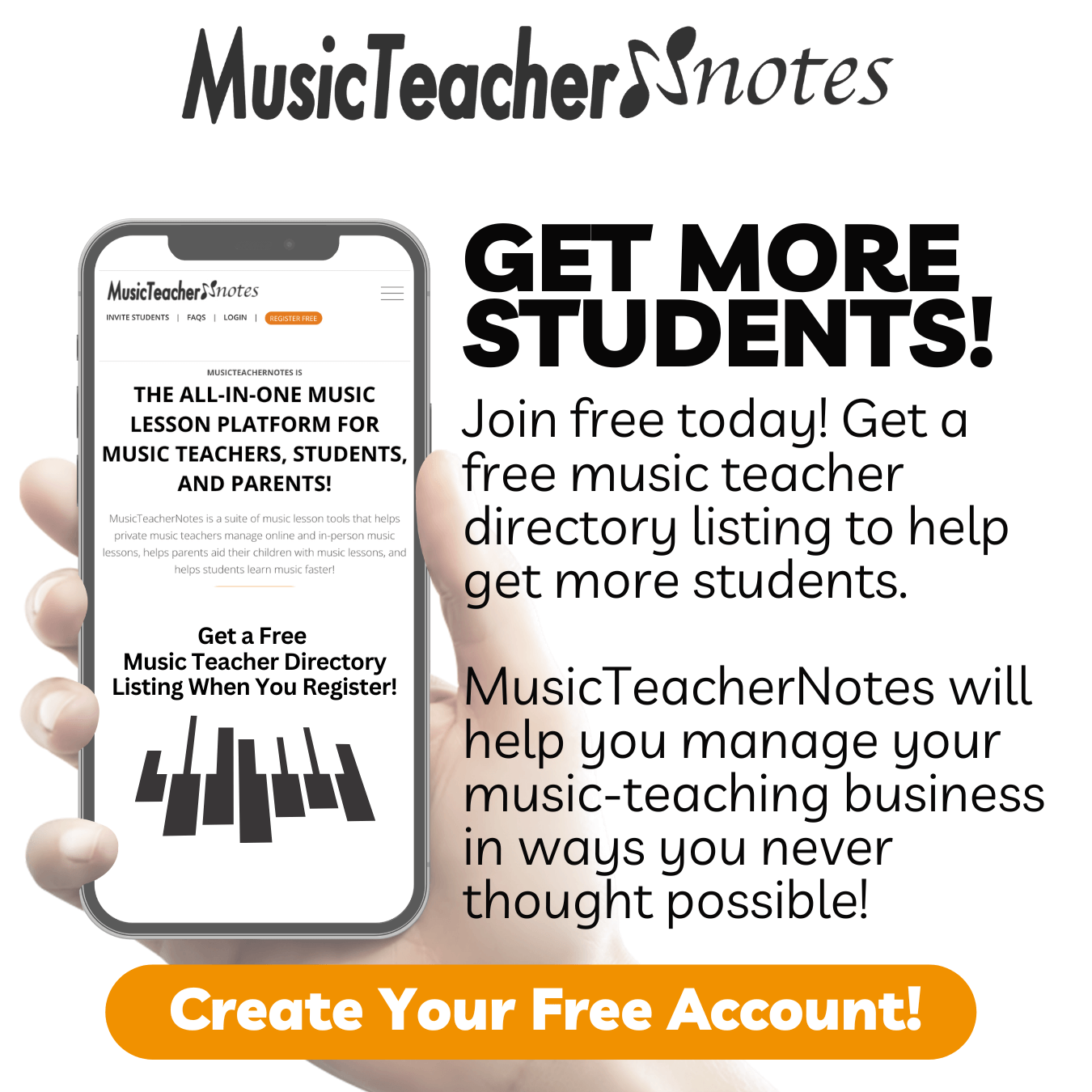
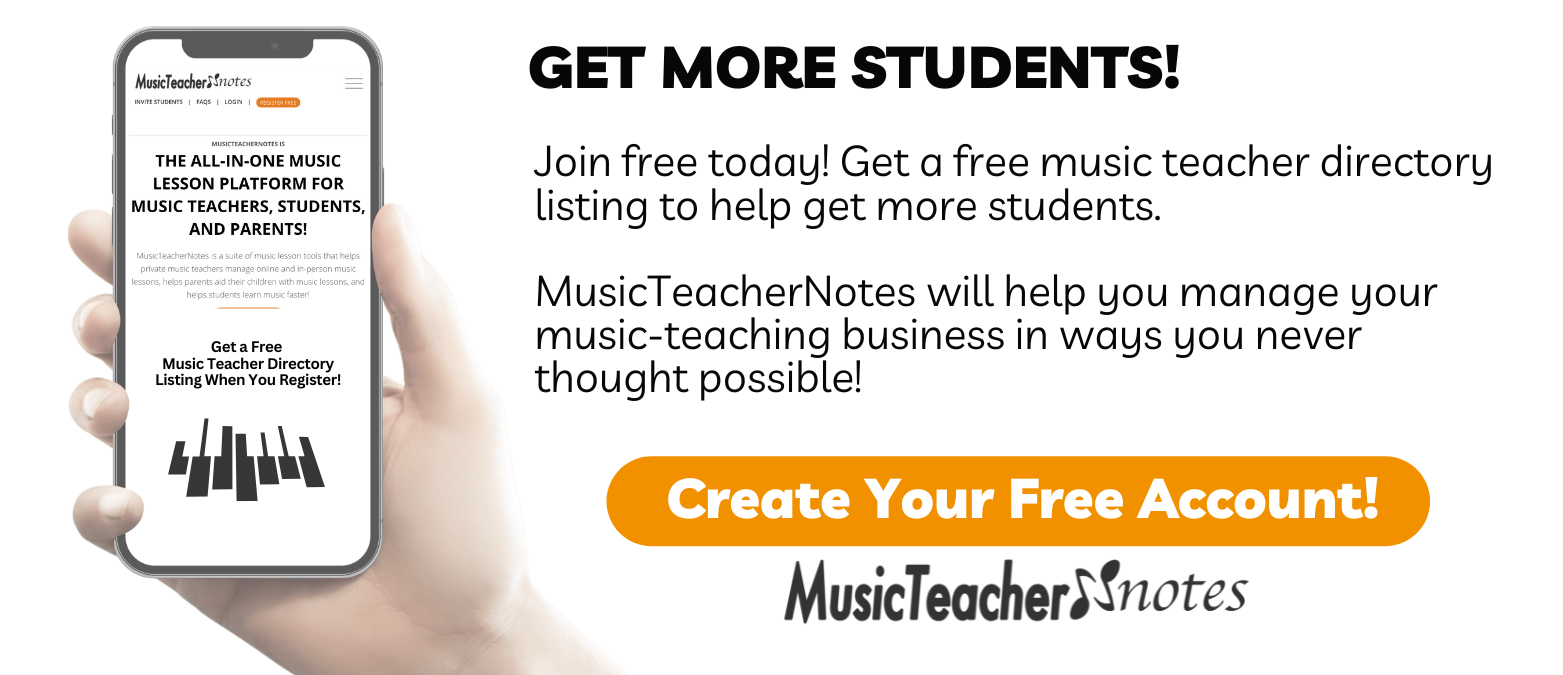
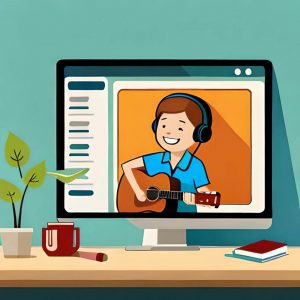 Running a successful music school, success hinges on strategic promotion without breaking the bank. Get ready to dive into a world of online music lesson marketing insights you never considered! This article will take you on a comprehensive journey to explore and discover everything you need to know about the challenges, benefits, and strategies
Running a successful music school, success hinges on strategic promotion without breaking the bank. Get ready to dive into a world of online music lesson marketing insights you never considered! This article will take you on a comprehensive journey to explore and discover everything you need to know about the challenges, benefits, and strategies 
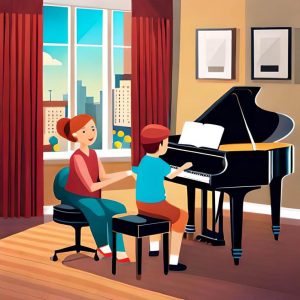 Beginning a private music school is a transformative blend of passion and entrepreneurship, benefiting both you and your community.
Beginning a private music school is a transformative blend of passion and entrepreneurship, benefiting both you and your community.  Being a successful and nurturing music teacher is a delicate balance of passion, dedication, and effective teaching strategies.
Being a successful and nurturing music teacher is a delicate balance of passion, dedication, and effective teaching strategies. 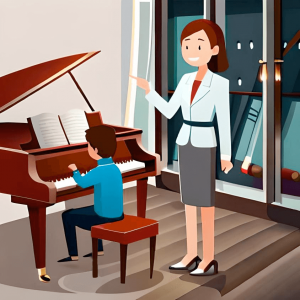 Private music lessons have long been celebrated for their ability to nurture individual talents and shape aspiring musicians into accomplished artists.
Private music lessons have long been celebrated for their ability to nurture individual talents and shape aspiring musicians into accomplished artists.  In today’s diverse and competitive world of music education, finding your unique voice and standing out from the crowd is crucial for success. This is where niche marketing comes into play, offering a strategic approach that empowers music teachers to carve out a distinct identity and connect with a targeted audience of students who share their passions and interests. Music teachers can unlock many benefits that differentiate them and amplify their impact by focusing on a specific genre, instrument, or teaching method. In this article, we explore the world of niche marketing for music teachers, exploring its many advantages, while unveiling effective strategies to implement niche marketing into your overall
In today’s diverse and competitive world of music education, finding your unique voice and standing out from the crowd is crucial for success. This is where niche marketing comes into play, offering a strategic approach that empowers music teachers to carve out a distinct identity and connect with a targeted audience of students who share their passions and interests. Music teachers can unlock many benefits that differentiate them and amplify their impact by focusing on a specific genre, instrument, or teaching method. In this article, we explore the world of niche marketing for music teachers, exploring its many advantages, while unveiling effective strategies to implement niche marketing into your overall 
